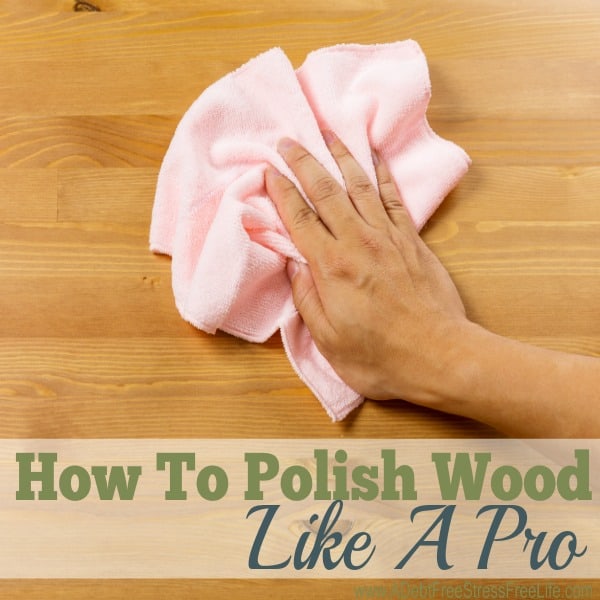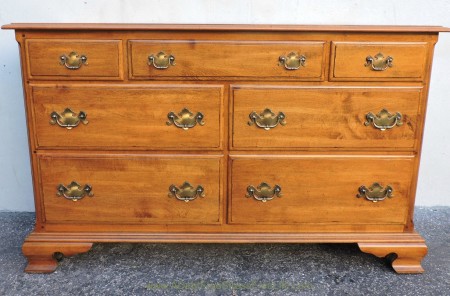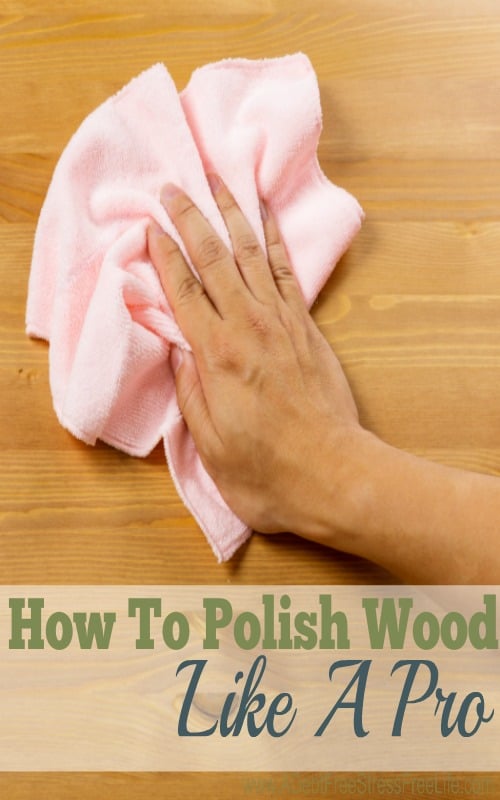A Mess Free Life may collect a share of sales or other compensation from the links on this page.
This time of year I get down and dirty and give my home a deep cleaning. I like to do this before the Christmas rush so that I can focus on other things.
One of the areas I focus on is polishing my wood furniture along with the best choice of wood polish.
Wood furniture is timeless, but unless you polish it regularly, you won’t be able to preserve its natural beauty.
Even your oldest piece of wood furniture can look like new if you take the time to read these cleaning tips on how to properly polish your wooden furniture.
Table of Contents
How To Polish Wood Like A Pro
A Few Do’s and Don’ts of Wood Polish
1. Oil to Oil Only
Wood oil can be applied as needed but is not appropriate for all wood finishes. Furniture oil like Tung and Linseed oil evaporate, get tacky and the remaining residue dries to a hard and protective finish.
Only use oil and oil finished surfaces.
2. Oil and Wax Don’t Mix
A chemical reaction occurs between wax and oil that ends up degrading them both. The wax will become opaque and attract dirt and dust.
In the end, you’ll have to have it removed completely (professionally) if you ever want that piece of furniture to look beautiful again.
3. Don’t Use Olive or Vegetable Oil
Cooking oils don’t do a good job of polishing furniture. Nut, vegetable, and olive oils spoil and go rancid.
The rancid oil smells bad, and if it permeates your wood, it will make the furniture smell bad too.
4. Damp Dust Polyurethane Finishes
Wax and polish don’t help and will damage polyurethane finishes.
5. Avoid Silicone polish
Silicone polish is very shiny, but it does nothing to nourish the wood. It’s also impossible to remove.
I’d only use it as a very last resort when a piece is on its last legs, and you are not worried about restoring it.
Silicone-containing cleaners/polish will not come off with detergents and have to be mechanically removed. You cannot stain or lacquer over silicone.
Related: The Fall Cleaning Checklist That Gets Your Home Ready for Winter
Wood Furniture Polish
Wood polish is used to protect wood against abrasions and give your furniture a shiny appearance. Polish evaporates quickly but is much easier to apply than wood wax.
Here’s a few simple Wood Polish Recipe that works wonderfully on wood furniture:
Mineral Oil and Vinegar Wood Polish
- One cup mineral oil
- One-fourth cup white distilled vinegar
Mineral oil is used to rehydrate and protect wood furniture from stains, spills, and liquids while vinegar cleanses it. Pour the mixture into a bottle and you’re ready to go!
If you don’t like the smell of the vinegar, try this lemon-scented wood polish:
Mineral Oil and Lemon Extract
- One quart mineral oil
- One tablespoon lemon extract
Stir the mixture together and store in a glass or plastic container.
Related: How To Clean Your Windows Like A Professional
Wood Waxes
Wood wax often contains beeswax and creates a protective seal on the wood, which keeps moisture in and repels stains and moisture that could harm your wooden furniture.
Instead of the glossy finish achieved with wood polish, the wax polish will leave more of a glowing sheen.
Colored or Pigmented Wax
Colored or pigmented wax or polish can enhance the wood color of the finish. A pigmented wax will conceal nicks, scrapes, or blemishes in the wood color or the finish.
Waxing with pigment will leave a satin sheen. You may also reapply a clear polish or wax over pigmented wax if you desire a more glossy shine.
Clear Wax
Clear wax is appropriate for all wood furniture, regardless of the type or the color of the wood. Clear wax shines wood to a high gloss finish.
Too much clear wax applied to the finish will make the wood look dull and lifeless. The key to getting the high shine is to apply one coat of wax and buff, buff, buff.
I recommend using a mechanical buffer to achieve the desired look.
Related: 4 Cleaning Tricks From A Professional Cleaner
How To Polish and Wax Wood
Choose between wax or polish based on what’s appropriate for your wood finish.
Remember: If your wood has a wax finish, stick with a wax polish. If your wood has an oil finish, stick with an oil polish.
Gather your tools and supplies:
- Wood polish or wood wax (recipe above)
- Clean cotton rags
- A soft bristle brush
- A soft buffing cloth
Polishing
- Apply wood polish directly onto the clean cotton rag
- Begin wiping with the grain
- If your wooden furniture has intricate details, dab the wood polish directly with a soft-bristled brush and continue to use a circular motion
- If your furniture needs more wood polish, apply another layer and wait for it to saturate fully
- Use the soft buffing cloth to remove any excess wood polish
Waxing
- Apply a small amount of wood wax directly onto the clean cotton rag
- Begin wiping with the grain, starting at one position and working your way out
- Let the wood wax set for an hour
- Repeat steps one through three if you feel your wood furniture needs more protection
- Buff using a clean, soft buffing cloth to remove the excess wood wax or use a mechanical buffer.
- Remember less is more with wax.





